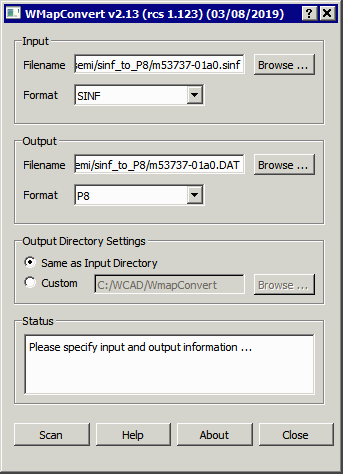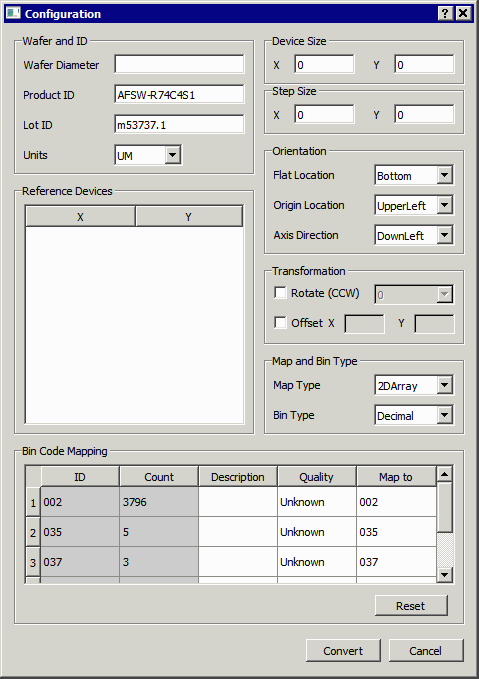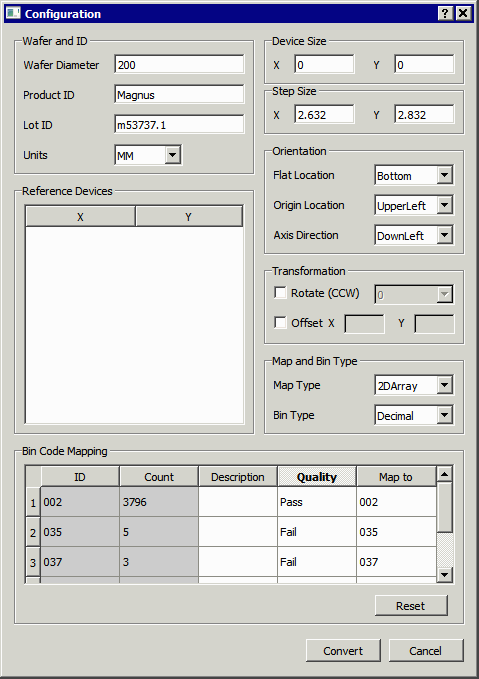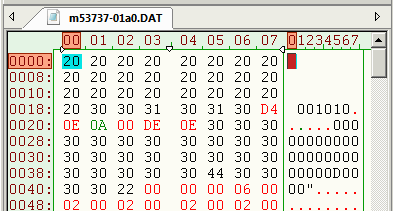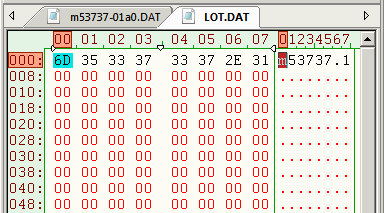SINF to TEL P8
SINF is an ASCII map file format and TEL P8 is the binary format for the family of probers build by Tokyo Electron Limited. The TEL P8 prober requires two input files: a wafer file and a lot file.
Start the program by double clicking on the WaferMap Convert shortcut. The main dialog should open.
Now use the drop downs to set your input format to SINF and your output format to P8.


